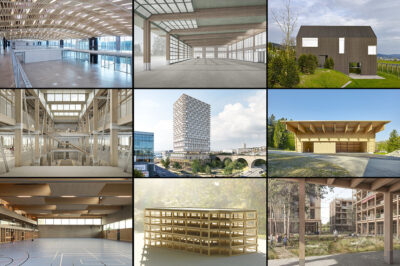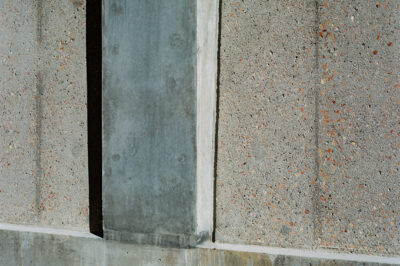
«Squaring the circle» – Project Integral wins the competition for Naubrücke Laufen
In the city of Laufen extensive flood protection measures for the river Birs are planned for the upcoming years. Thereby the dam crests will be moved drastically, so that the replacement of the Naubrücke is necessary. The competition for the new bridge was conducted by the Civil Engineering Office of the canton Basel-Landschaft. The design Integral by the team consisting of Lüchinger+Meyer / CESMA INGENIEROS / explorations architecture was elected the winner of said competition. «Integral combines many innovative ideas with a pleasant appearance and solves difficult challenges with distinction», the jury judged in summary.
The bridge Integral crosses the river Birs in an oblique angle and relies on a supporting structure lying partially above and below the bridge. Due to the skew bearing and the limited height for construction underneath a trough bridge with two double-walled steel girders as main beams is suggested. According to the jury, the ‘squaring of the circle’ is achieved by the drafter with the rather unconventional fully clamped support of the simple beam in the foundation soil of the southern abutment. Thanks to this arrangement the beam’s height can be reduced. Above the deck only 1.35 m of the supporting structure remains visible, which can easily be overpeered by pedestrians and cyclists. The abutment at the northern shore is monolithically connected to the main beams as well, creating an integral structure and thus giving the project its name. The abutments are well-grounded with piles and run parallel to the course of the river. The different designs of the abutments result in a rigid clamping of the main beams at the southern end and an elastic clamping at the northern bank. This concept of support and the cross-section’s design, where the whole height of the visible bridge is statically active, allows an extraordinary slenderness of 1:29.
Both main girders flank the lanes for road traffic and cycling on either side. The loads from the deck slab are deflected to the main beams via composite cross girders. On both sides of the cross section the narrowing cross girders function as composite cantilever slabs, giving support for the footpath’s concrete slab above. In order to protect the longitudinal girders above the deck from vehicle impact renewable cast-in-place concrete barriers are used.
With the chosen arrangement of supporting elements, lanes, barriers and rails the bride has a total width of 19.25 m. The physical separation of pedestrians and other traffic is not the only beneficial aspect of the trough cross section. Additionally, it contributes to the reduction of the environment’s noise load. In this aspect the jointless arrangement of the structure has a positive influence as well.
Besides the shape, the visual slenderness and the accurate constructive design it is the architectural design which contributes decisively to the appearance of the bridge. The choices of colours, building materials and equipment underline the modest presence of the structure in the gentle surroundings. At night, the LED-lighting ensures an appealing sight.
Concluding, we cite the jury again: «The project stands out due to the extensive, profound and coherent treatment in all components.» We are looking forward to sustaining it with our partners in the further development of the project.
(Visualisations: explorations architecture)







